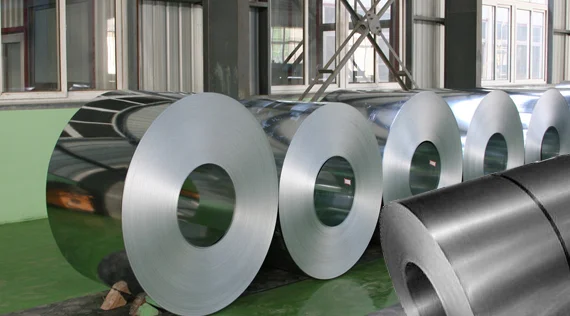
SPOKANE (Scrap Monster): The latest statistics published by the Latin American Iron and Steel Institute (ALACERO) indicates that steel production and consumption by the Latin American and Caribbean region reported growth during the initial four months of the current year. The crude steel and finished steel production by the region increased. The initial four-month period also recorded growth in steel consumption.
According to ALACERO trade statistics, the consumption of finished steel during Jan-Apr ’17 surged higher by 7% when compared with the previous year. The region’s crude steel production soared by 16% during this period. Meantime, finished steel production increased by 4% over the previous year.
The crude steel production by Latin America and the Caribbean totaled 20.9 million tonnes (Mt) in Jan-Apr ‘17, which is significantly higher by 16% when matched with the production volume of 18.0 Mt recorded during the corresponding four months in 2016. Brazil continued to remain as the largest producer of crude steel in the region. The country’s production totaled 11.1 Mt, accounting for 53% of regional production. Brazil’s crude steel production surged higher by 14% year-on-year.
The finished steel production during the period recorded 4% jump to total 17.3 Mt. The main producer of finished steel in the region was Brazil, which accounted for 42% of the Latin American finished steel output. Brazil’s production totaled 7.3 Mt. In second place was Mexico with 6.2 Mt, constituting 36% of regional output.
During the first four months of 2017, the apparent finished steel usage by the region totaled 22.4 Mt, 7% higher when matched with the consumption during Jan-Apr ’16. Out of this, consumption of flat products accounted for 56% of total consumption, totaling 12.5 Mt. The consumption of long products and seamless tubes totaled 9.5 Mt and 357,000 mt respectively. The countries to record significant rise in finished steel usage were Mexico (up 526,000 mt, +6%), Colombia (94,000 mt, +7%) and Brazil (up 83,000 mt, +1%). On the contrary, Argentina reported 11% decline in apparent usage. Meantime, Bolivia, Guatemala and Ecuador reported 55%, 43% and 25% decline in consumption respectively.
Imports represented 34% of Latin American finished steel consumption. The region imported 7.7 Mt of finished steel during Jan-Apr ‘17. Out of this, 5.0 Mt were flat products, 2.5 Mt were long products and the remaining 186,000 mt were seamless tubes. The exports of finished steel by Latin America totaled 3.1 Mt, surging higher by 9% in comparison with the previous year. Of this, flat products totaled 1.6 Mt, long products accounted for 1.2 Mt and seamless tubes comprised of 328,000 mt.
According to ALACERO data, finished steel by the region reported net trade deficit of 4.6 Mt during the first four months of 2017. The country to report largest trade deficit was Mexico. Mexico’s trade deficit totaled -1.8 Mt, followed by Colombia (-814,000 mt), Chile (-550,000 mt) and Peru (-509,000 mt).Brazil and Argentina were the only countries to record trade surplus during the quarter.
The advance information for May ’17 released by the steel trade body suggests that crude steel production edged higher by 10% in comparison with May ’16. The monthly output totaled 5.4 Mt. Also, production of finished steel has inched higher by 2% in comparison with the previous year to close at 4.4 Mt. The cumulative crude steel and finished steel production during Jan-May ’17 stood at 23.0 Mt and 20.9 Mt respectively.
ALACERO is the organization that brings together the steel value chain of Latin America. Established in 1959, the organization comprises of 49 companies in 12 different countries, whose combined production represents nearly 95% of the steel manufactured in the region.
| Copper Scrap View All | |
| Alternator | 0.32 (0) |
| #1 Copper Bare Bright | 3.76 (-0.01) |
| Aluminum Scrap View All | |
| 356 Aluminum Wheels (Clean) | 0.73 (0) |
| 6061 Extrusions | 0.64 (0) |
| Steel Scrap View All | |
| #1 Bundle | 460.00 (-15) |
| #1 Busheling | 480.00 (-15) |
| Electronics Scrap View All | |